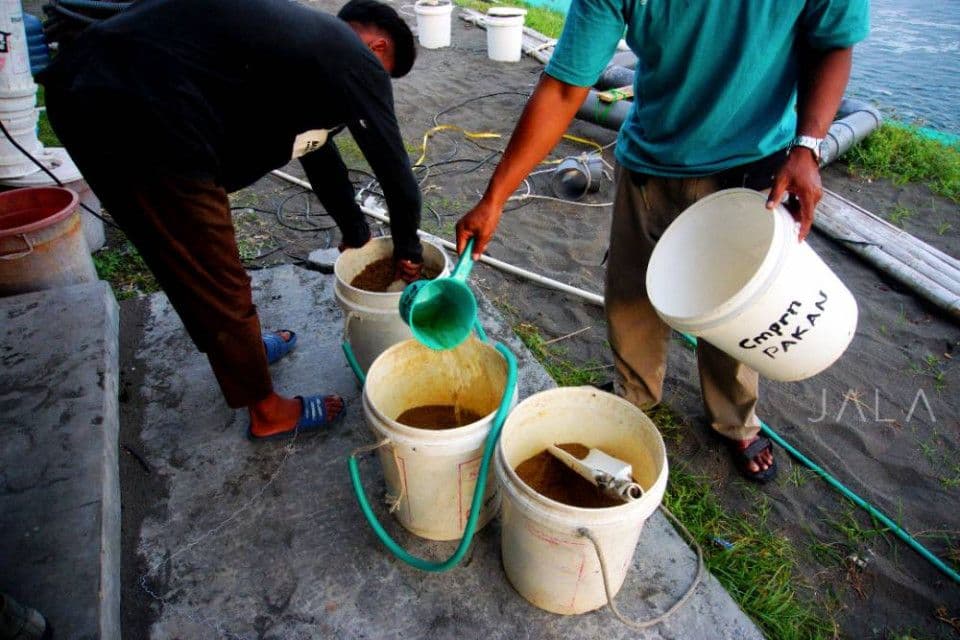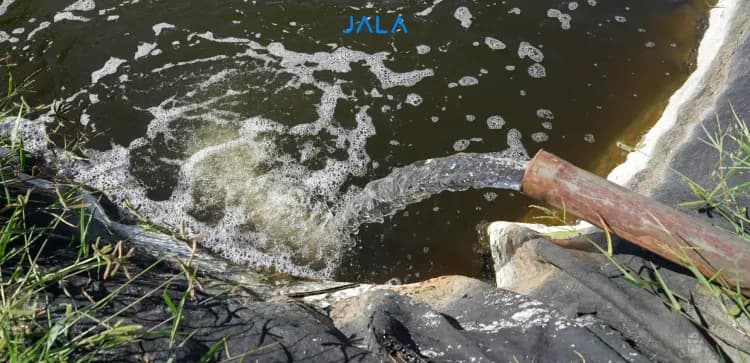
Feed is the biggest production cost in shrimp farming. Various innovations and efforts were made to achieve efficient feed so as to reduce production costs to buy feed. One strategy that is quite familiar is feed fermentation.
Protein is the main energy source for shrimp. Fermentation is the process of breaking long chain proteins into simpler proteins. Fermented feed means that feed is processed through a chemical structure change process with the help of enzymes produced from bacteria or fungi. That's why fermented feed is easier to digest for shrimp.
Fermented feed is claimed to be easier to digest so that feed nutrients are more easily absorbed by shrimp. The feed that has gone through the fermentation process has been 'digested' outside so that the work of the shrimp's stomach is lighter to process the protein and other elements contained in the feed.
Some probiotic or yeast products are ingredients to trigger fermentation. Different probiotics used will result in different protein breakdown. Enzymes produced by microbes work specifically, including the products they produce.
If the formulation of fermented feed is carried out properly, it will be able to support the growth of shrimp and improve the immune system. Protein and various other supporting elements such as vitamins and minerals can be increased in the feed given. When the fermented feed given is more optimally absorbed by the shrimp, the remaining nutrients are wasted through feces less. The next effect is that the organic pollutant load becomes smaller.
There are risks behind the fermented feed treatment!
Commercial shrimp feed produced by many feed mills today is generally produced to be easily digested and can be directly utilized by shrimp. It is different if the feed is self-processed which is made from fresh raw materials. For example, feed from rice bran, after fermentation, the total protein content will be higher.
Several things must be considered if it is the feed from the manufacturer that is fermented. The energy of the feed decreases because it has previously been utilized by breaking microbes. Then if the fermentation is not done carefully it can be contaminated by unwanted microbes. It could be contaminated with pathogenic microbes or fermentation produces toxins.
Water stability or the stability of feed in water will decrease and dissolve easily in water. This is especially true for commercial feeds that are fermented. Commercial feeds have been designed to survive in water so that the shrimp can find them without dissolving for a certain period of time. Then what needs to be considered again is that it must have a high attraction for shrimp. So that the shrimp is easy to find food and is not wasted because it is not eaten.
What must be remembered, shrimp eat not like humans. The feed must be stocked first in the water. So there is a possibility of soluble feed. If a lot of it is soluble and the shrimp feed is the highest in protein it can contribute to the rise of toxic nitrogen compounds in the water. One of the ways to prevent this is by coating or 'wrapping' the feed using certain materials.
Feed containing nitrogen (N) will be broken down into ammonia. It is then converted to nitrite to nitrate. Each of these nitrogen compounds can fertilize the growth of plankton. Of course it will be another advantage, if at that time the plankton is not excessive and is not dominated by harmful plankton such as dinoflagellates or blue-green algae .





